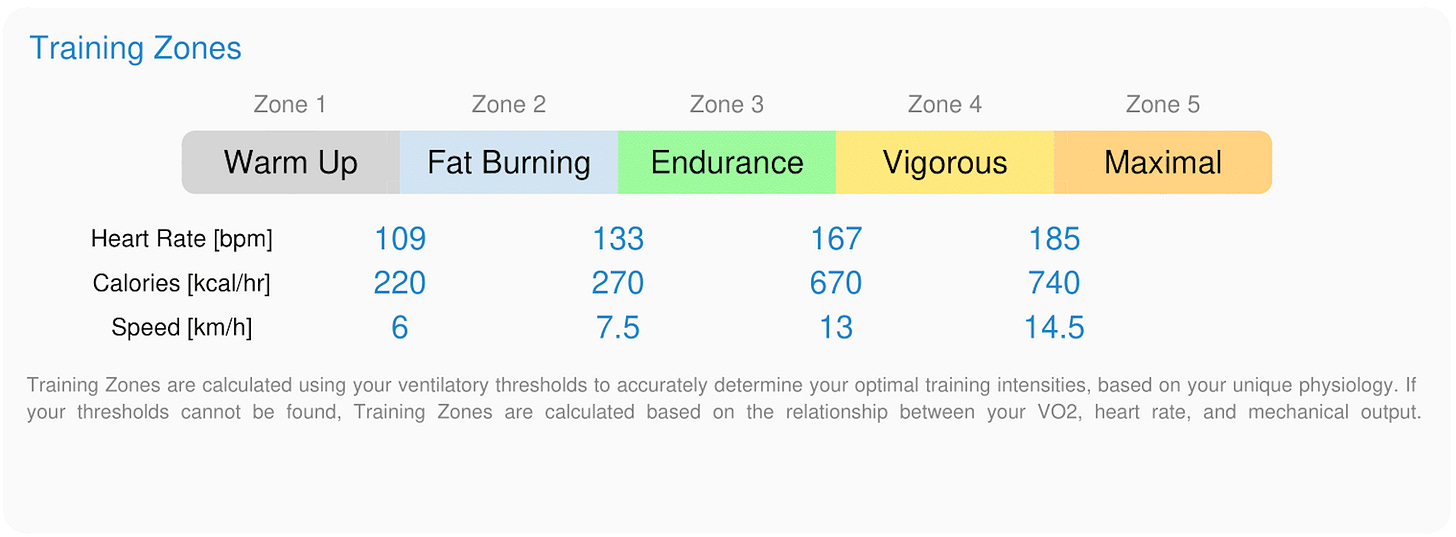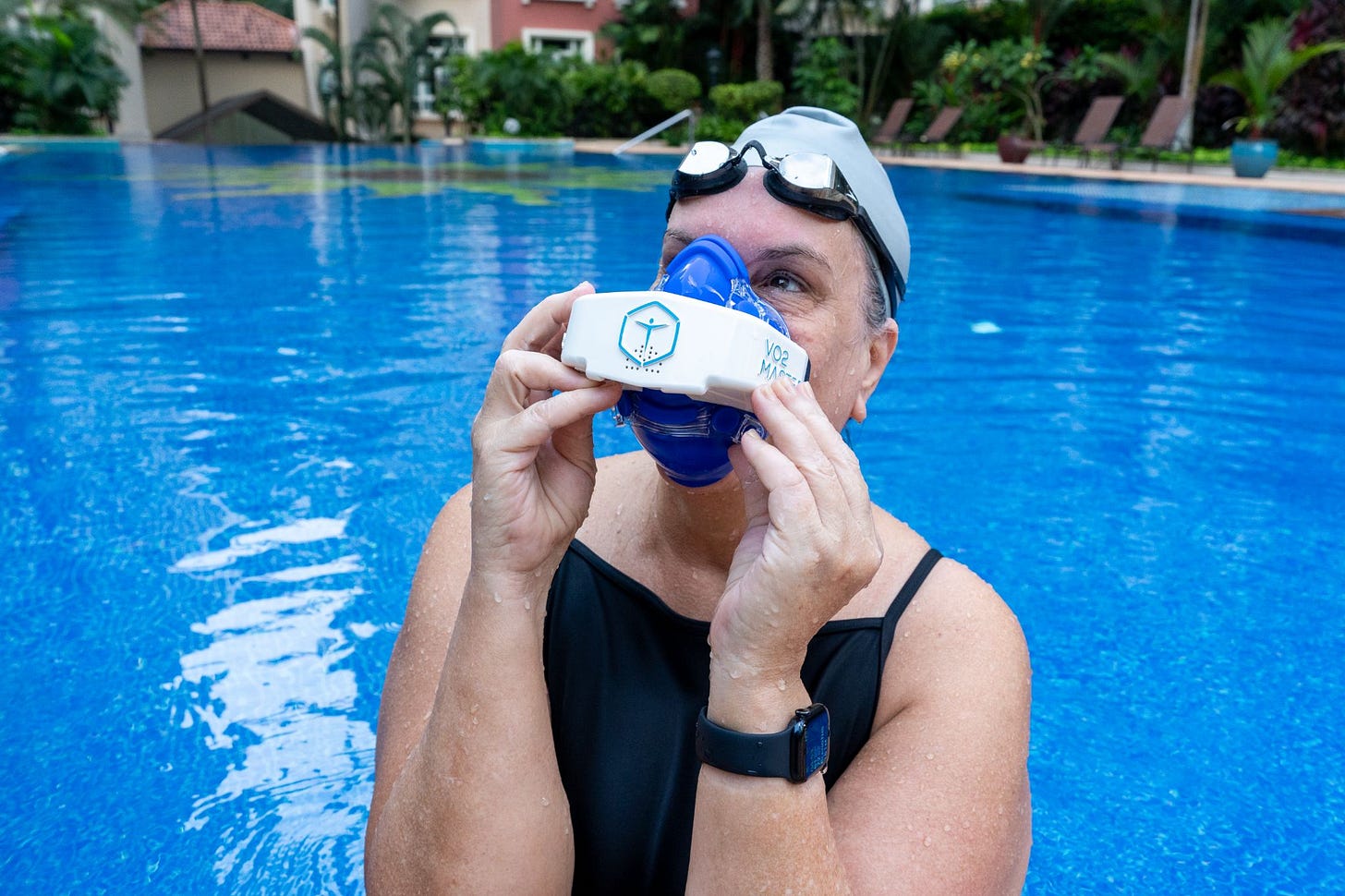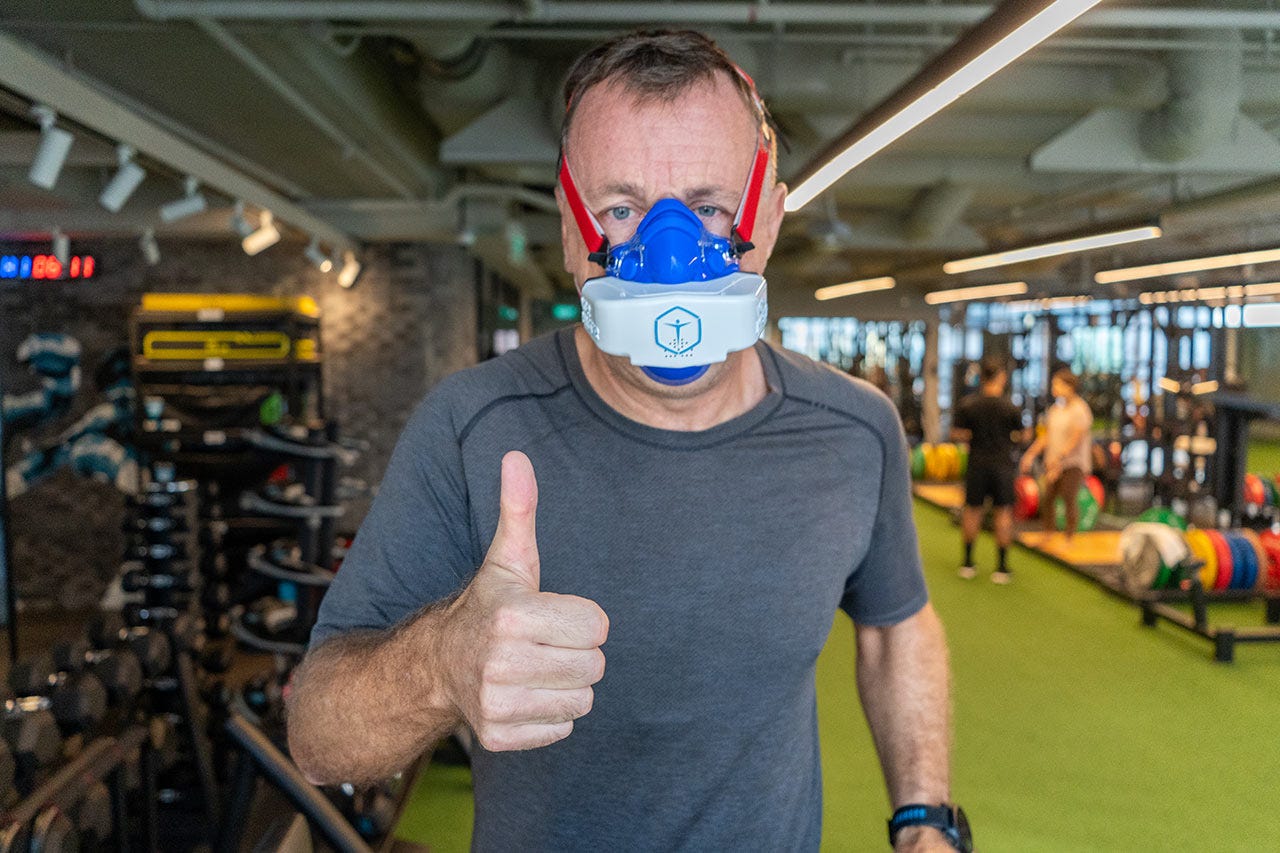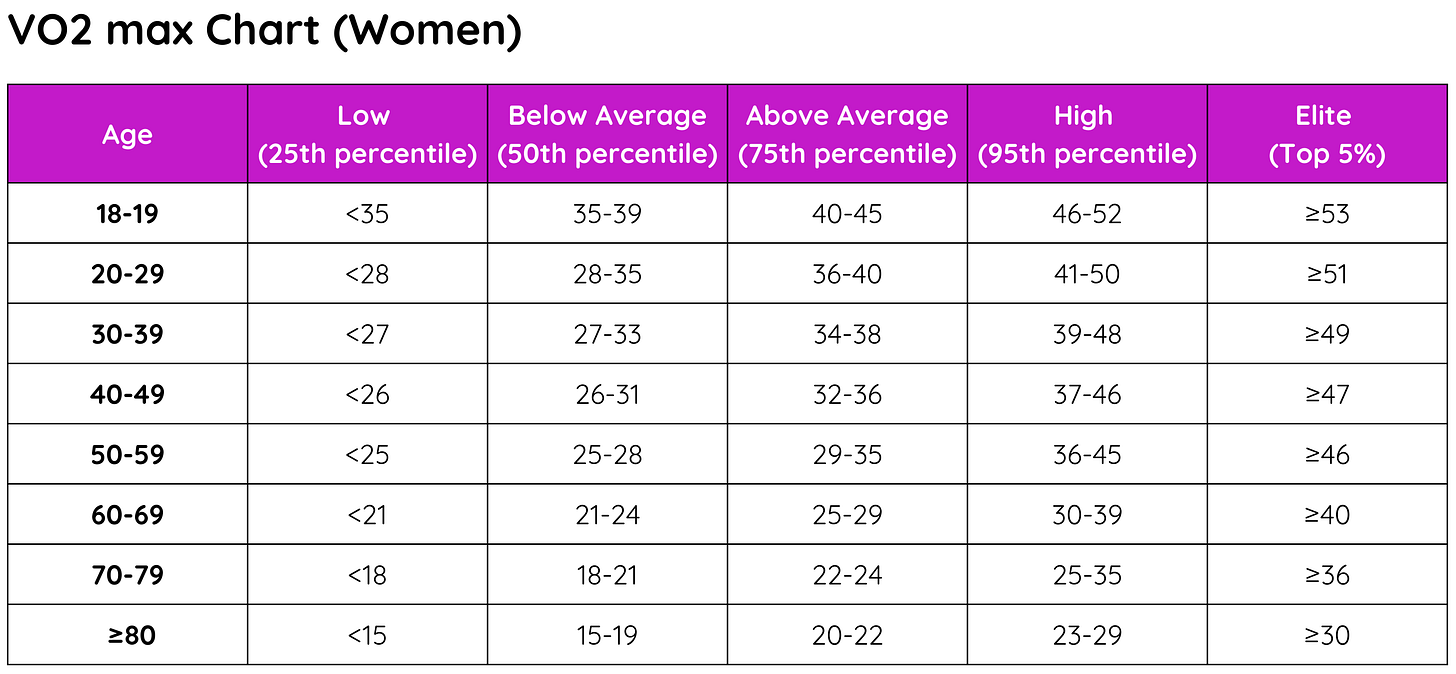Five Questions I Often Get On VO2 Max Tests
What to know before you test, equipment differences, and more.
Hi there, this is Jing.
My team has been conducting physical assessments, including the VO2 Max test, since we launched our Sports and Healthy Ageing Lab in 2023.
Today, I’ll walk you through the top five questions I'm most frequently asked about the test, in the following areas:
Purpose
Protocol
Duration
Preparation
Accuracy
1. What is It For?/What Do You Get?/Why Do People Do It?
The first question I typically get is along the lines of 'what is it for, why do people do it, and what do you get out of it?’
There are three reasons why people do the test.
Aim of The Test
The most all-encompassing reason is health.
VO2 Max, in layman's terms, refers to the amount of oxygen your body can utilise.
It’s a good indicator of health because for your body to utilise oxygen, your lungs need to be healthy to breathe in air, your heart needs to be healthy to carry that oxygen in your blood around the body, and your muscles need to utilise that oxygen.
All in all, the more effective your respiratory, cardiovascular, and musculoskeletal systems, the better your VO2 max score.
On the other hand, people with a low VO2 max score also do the test for health reasons. For instance, going below a particular score is one of the criteria for a heart transplant.
There is also research with a prediction chart of your mobility decline as you age, based on your current VO2 max score, and likewise for your risk of death within the next decade.
Feel free to check out my previous video to learn more about how VO2 Max relates to health.
The second reason to do the test is improve sports performance.
For example, VO2 max is one of the key determinants of your running performance. The other two being running economy and your threshold levels.
In other words, testing your VO2max, when taken with other metrics, can tell you if you are improving or if you need to work on it further.
Hence, it is a staple assessment for many athletes.
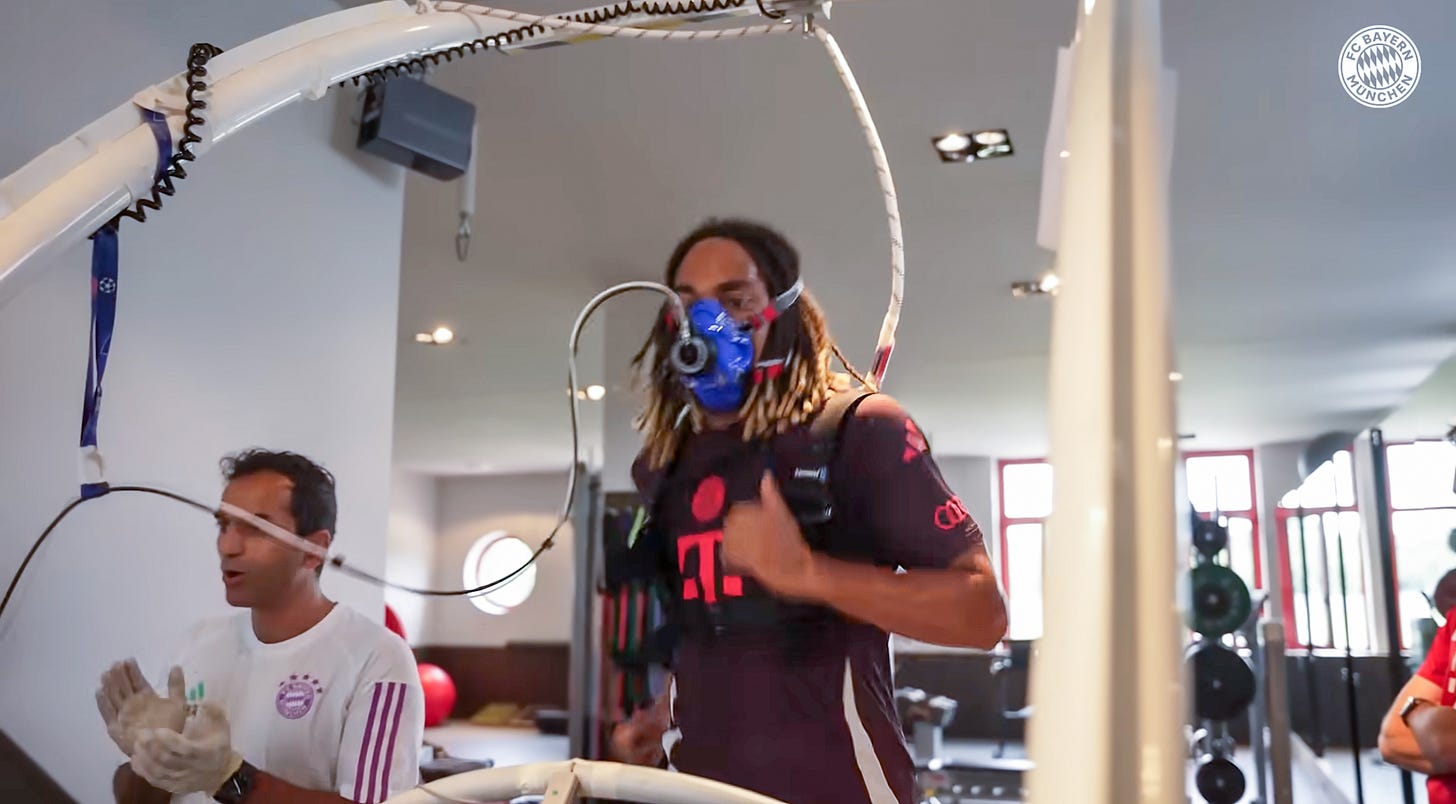
Last but not least, another reason people undergo VO2 max tests is for research purposes.
Metrics You See in Test Results
As for what you get out of the test, it depends on the equipment used.
You should minimally get your VO2 max result.
Some test providers would also be able to provide you with other metrics like ventilatory threshold levels, heart rate training zones, which percentile you’re in, etc.
Some of these metrics, like training zones, can guide your future VO2 max trainings.
2. What’s the Test Like?
The second question I often get is about how the test goes.
To make explanation easier, here’s one of the test I conducted.
Thank you to fellow trainer, Lorna, for allowing me to use the footage.
Example: Lorna’s VO2 Max Test
For her test, she started off by walking at a speed of 4km per hour.
It is part of her three minutes of warm up, and after that, she started the test proper, at a speed of 5km per hour.
She stays on that speed for one minute, then we increased the speed to 6km per hour, kept it there for another minute, then go up to 7km per hour, and so on.
We continued this increment of one km per hour every minute.
The test ended when she couldn’t keep up with the increased speed and called it quits. Beyond that, we slowed the treadmill to 3km per hour for quick cool down, for around three minutes.
Her protocol is one of the ways to do the test.
Other Ways to Do the Test
You can also do the test while performing other activities, like swimming, cycling, etc.
The other thing you can do is to add tests to the protocol, i.e. lactate threshold test and muscle oxygenation level tests.
Lastly, you can change the tests variables, i.e. how long you stay in each speed before the next increase, how big is each increase, whether you use incline, etc.
All these changes come with benefits and trade-offs, making the test easier, longer, more accurate, less accurate, etc.
The protocol that suits you would differ based on your capability.
Test providers might differ in recommending which protocol is for you based on their judgement, so feel free to reach out if you have further questions on this.
For now, we move onto the next most asked question.
3. How Long is a Session?
The straightforward answer is that the workout alone will most likely take around 30 minutes, plus minus ten minutes, including warm up and cool down.
However, test providers can offer the service differently.
For example, there is typically consultation time, equipment set up time, etc.

My team opted to go with an hour of customised testing, i.e. if you come to us for a VO2 max test, your session will typically involve a VO2 max test plus a few other tests most useful for your goal.
This is what we deem best for clients after a year of operations because:
Our testing services are frequently upgraded
You might be unaware of the updates / what is best for you
We want to maximise your trip to our lab
Again, feel free to reach out if you have more questions on the topic - my team offers a free phone call consult before every session.
I now move onto the next most frequently asked question.
4. Do You Need to Train For the VO2 Max Test?/What Do I Need to Prepare?
First up, whether you need training.
Short answer:
It depends on your goals.
Long answer:
As mentioned earlier, it is common practice for some people to do it as a pre-season test, i.e. you come in without any training to see where you stand, and then you can compare your results again across the season.
However, I also have many people doing a VO2 Max test for the first time.
The important thing to know is that your VO2 Max can increase within a few weeks of training, especially if you are unconditioned. Likewise for your heart rate training zones.
Hence if you are aiming for a high VO2 Max and useful training zones, come for the test when you have done a few weeks of training.
Alternatively, if you goal is to find out your VO2 Max baseline, you would not need to train for the test.
As for what to prepare,
Make sure you get a doctor’s clearance, especially if you have experienced chest pain, breathlessness, or have a family history of cardiac events
Attend the session fresh, i.e. with sufficient sleep, a meal two-three hours prior,
and preferably not after a hard workout day (unless advised otherwise)
Pick the right attire according to your chosen activity
The list goes on.
It might differ based on your test provider, e.g. I send a pre-session brief and a PAR-Q form to my clients beforehand.
How I Approach My Own Testing
I prefer to do a few tests over the course of the year.
One at the start of the year to check for baselines and training zones.
Another after a few weeks of training to check for improvements and updated training zones.
And a last one near the end of my training year to see the net gain or loss in VO2 max that year.
However, this routine can be excessive for some people, and it’s really up to you to customise the test for your own, then derive an answer as to how regularly you want to do the test, and whether you want to train for the test or not.
5. Accuracy Difference Between Watch and Test Devices
The last question I often get is about accuracy.
This might be the test in comparison to wearable devices and other methods to derive VO2 Max, or whether the test I offer is a gold standard measurement.
Accuracy of My Company’s Test Equipment
I use the VO2 Master, a device which accuracy has been validated in multiple studies against the gold standard measurement, which is by the Parvomedics analyzer.
The accuracy trade off I picked was for better user experience, overall cost, and portability; the Parvomedic analyzer is less flexible in its usage, e.g. for swimming/outdoor usage, cost >8x more, and is more bulky.
Accuracy of Derived Heart Rate Training Zone
The VO2 Master is also superior in training zone calculations.
The device, on its own, derive the zones using ventilatory threshold levels.
This differs slightly from lactate threshold levels, which is another popular way to dervie training zones.
Notably, one method is not ‘more accurate’ than the other.
(I will discuss in the future content Zone Two’s imprecise nature.)
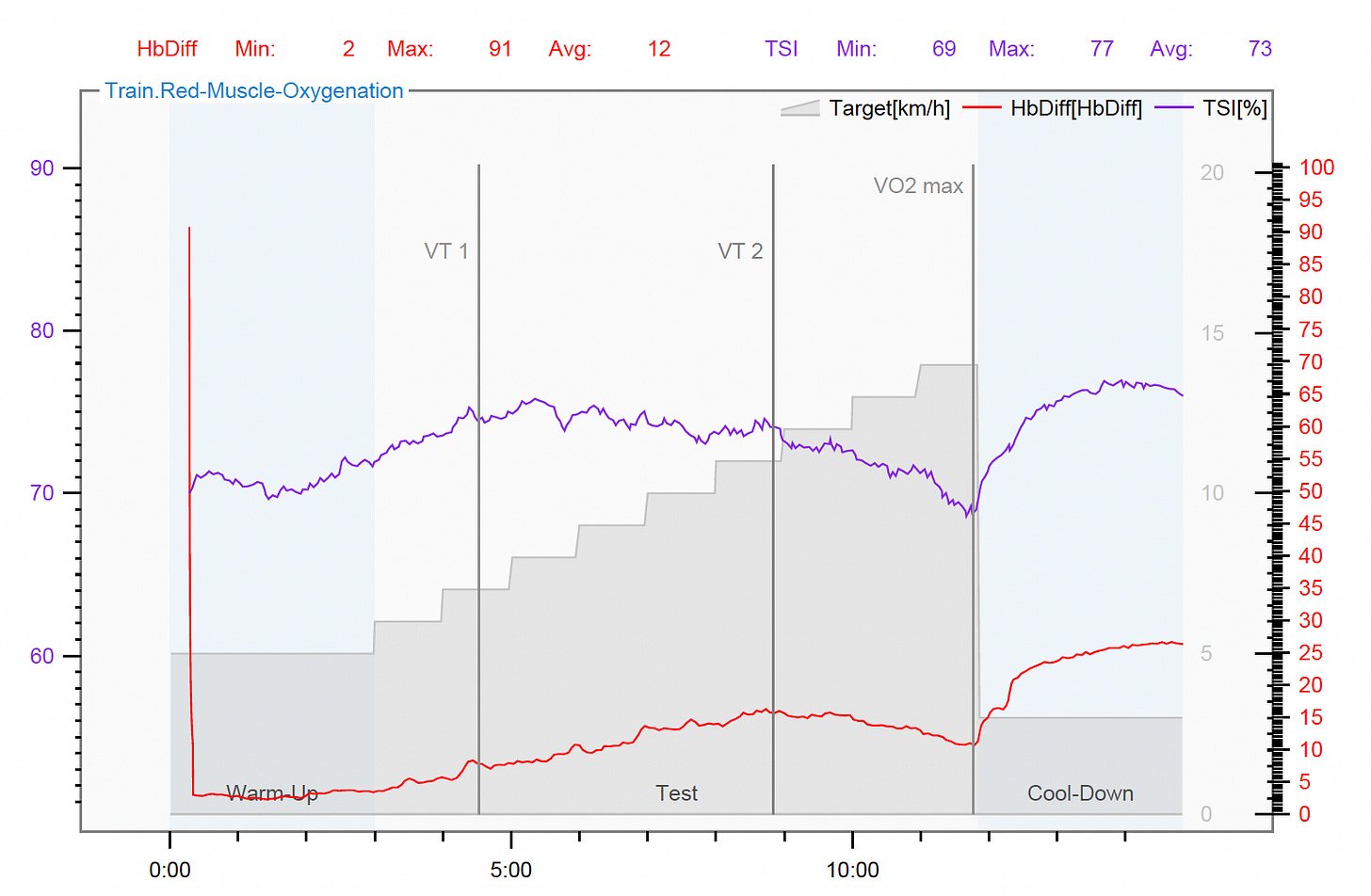
The plus side for the VO2 master is that you can add lactate metrics as a secondary indicator into its app for results reconciliation.
Additionally, the VO2 Master also syncs with muscle oxygenation sensors which tells you the amount of oxygen in your muscles (SMO2), enabling a third way using physiological data to validate the training zones derived.
My team offers such SMO2 tracking and lactate threshold testing will be available soon.
I believe this trifold arrangement is best for clients, since you spend the same amount of time, effort, and money but get more robust training zone data.
Wearables Comparison
The second accuracy comparison often done is against wearables.
Scientists found is that smartwatches give you a result between 1% to more than 10% inaccuracy. So although it can be useful for estimation, researchers recommend that you should not use them for sports and health applications.
Anecdotally, the largest discrepancy I’ve came across is 16ml/kg/min on an Apple watch.
This difference means you can go from the bottom quartile to the top quartile, regardless of which age you are.
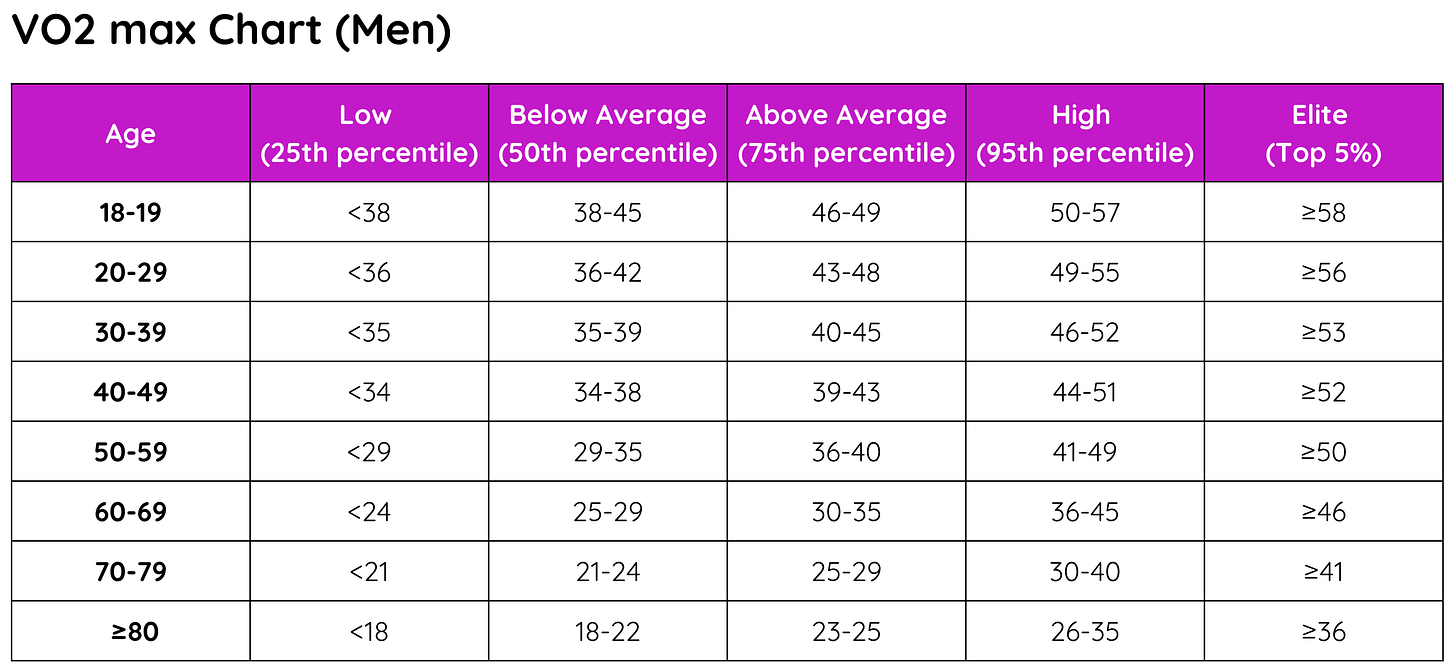
I found Garmin’s estimations closer, with biggest difference I’ve seen being 7.3ml/kg/min.
That is, however, still significantly inaccurate.
I know I can sound bias if I suggest you do a test for accuracy purposes because I’m a service provider, but I also think the data is there for you to make your own conclusion.
Regardless, I hope this article has been useful.
Feel free to contact me if you have any more questions!
References
Bonilla, A. V., González-Custodio, A., Timón, R., Cardenosa, A., Camacho-Cardenosa, M., & Olcina, G. (2022). Training zones through muscle oxygen saturation during a graded exercise test in cyclists and triathletes. Biology of Sport, 40(2), 439–448. https://doi.org/10.5114/biolsport.2023.114288
Davis, P. (2024). The reliability of the VO2 Master Pro metabolic analyzer and comparison with the Cosmed Quark. Science & Sports, 39(8), 706–709. https://doi.org/10.1016/j.scispo.2024.03.002
Düking, P., Ruf, L., Altmann, S., Thron, M., Kunz, P., & Sperlich, B. (2024). Assessment of maximum oxygen uptake in elite youth soccer players: a comparative analysis of smartwatch technology, Yoyo Intermittent Recovery Test 2, and respiratory gas analysis. Journal of Sports Science and Medicine, 351–357. https://doi.org/10.52082/jssm.2024.351
Macnab, A., Stothers, L., & Deegan, E. (2019). Development of a near-infrared spectroscopy interface able to assess oxygen recovery kinetics in the right and left sides of the pelvic floor. Journal of Biomedical Optics, 24(07), 1. https://doi.org/10.1117/1.jbo.24.7.075003
Mandsager, K., Harb, S., Cremer, P., Phelan, D., Nissen, S. E., & Jaber, W. (2018). Association of cardiorespiratory fitness with long-term mortality among adults undergoing exercise treadmill testing. JAMA Network Open, 1(6), e183605. https://doi.org/10.1001/jamanetworkopen.2018.3605
Montoye, A. H. K., Vondrasek, J. D., & Hancock, J. B. (2020). Validity and Reliability of the VO2 Master Pro for Oxygen Consumption and Ventilation assessment. International Journal of Exercise Science, 13(4). https://doi.org/10.70252/thjt1177
Pierce, S. J., Hahn, A. G., Davie, A., & Lawton, E. W. (1999). Prolonged incremental tests do not necessarily compromise V̇O2max in well-trained athletes. Journal of Science and Medicine in Sport, 2(4), 356–363. https://doi.org/10.1016/s1440-2440(99)80008-5
Van Beekvelt, M. C. P., Colier, W. N. J. M., Wevers, R. A., & Van Engelen, B. G. M. (2001). Performance of near-infrared spectroscopy in measuring local O2 consumption and blood flow in skeletal muscle. Journal of Applied Physiology, 90(2), 511–519. https://doi.org/10.1152/jappl.2001.90.2.511
Van Der Zwaard, S., Jaspers, R. T., Blokland, I. J., Achterberg, C., Visser, J. M., Uil, A. R. D., Hofmijster, M. J., Levels, K., Noordhof, D. A., De Haan, A., De Koning, J. J., Van Der Laarse, W. J., & De Ruiter, C. J. (2016). Oxygenation Threshold Derived from Near-Infrared Spectroscopy: Reliability and Its Relationship with the First Ventilatory Threshold. PLoS ONE, 11(9), e0162914. https://doi.org/10.1371/journal.pone.0162914
Wade. (2025, March 13). How to Perform a VO2 Max Test with VO2 Master - VO2 Master. VO2 Master. https://vo2master.com/blog/how-to-perform-vo2-max-test-vo2-master/
Yoon, B., Kravitz, L., & Robergs, R. (2007). V ̇O2max, protocol duration, and the V ̇O2 plateau. Medicine & Science in Sports & Exercise, 39(7), 1186–1192. https://doi.org/10.1249/mss.0b13e318054e304


